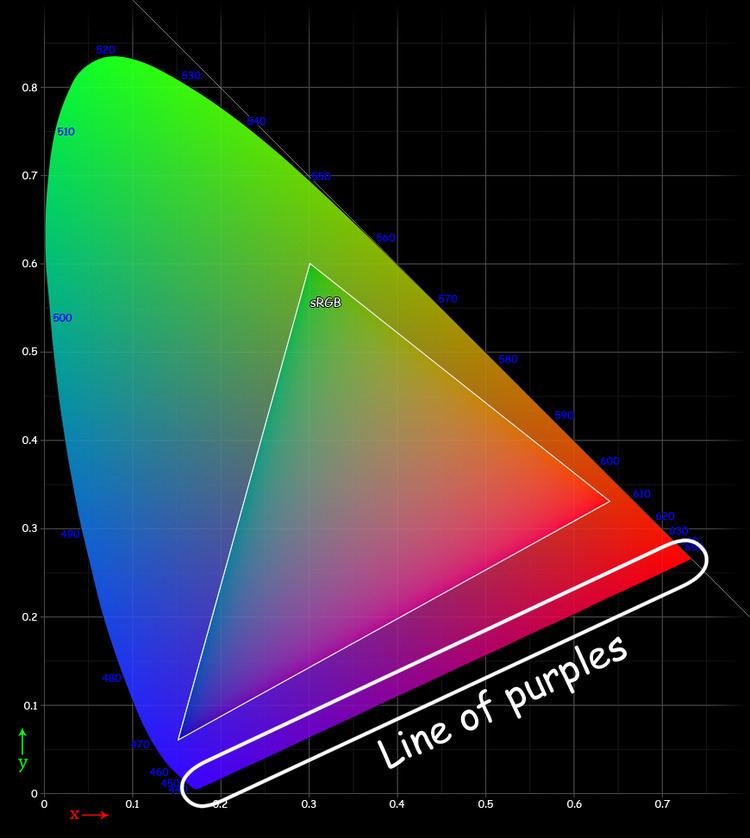 | ||
In color theory, the line of purples or the purple boundary is the locus on the edge of the chromaticity diagram between extreme spectral red and violet. Except for the endpoints, colors on the line of purples are not spectral. Line-of-purples colors and spectral colors are the only ones which are considered fully saturated in the sense that for any given point on the line of purples there exists no color involving a mixture of red and violet that is more saturated than it. There is no monochromatic light source able to generate a purple color. Instead, every color on the line of purples is produced by mixing a unique ratio of fully saturated red and fully saturated violet, at the extreme points of visibility on the spectrum of pure hues.
Contents
Unlike spectral colors (which may be implemented, for example, by nearly monochromatic light of laser, with precision much finer than human chromaticity resolution), colors on the line of purples are more difficult to implement practically. The sensitivity of cones to both of the spectral colors at the opposite extremes of what the human eye can see is quite low (see luminosity function), so commonly observed purple colors do not achieve a high level of brightness.
The line of purples, a theoretical boundary of chromaticity, should not be confused with "purples", a more general color term which also refers to less than fully saturated colors (see variations of purple and variations of pink for possible examples) which form an interior of a triangle between white and the line of purples in the CIE chromaticity diagram.
In color spaces
In 3-dimensional color spaces the "line", if present, becomes a 2-dimensional shape. For example, in CIE XYZ it is a planar sector bounded by black–red and black–violet rays. In systems focused on pigment colors, such as Munsell and Pantone, boundary purples might be absent, because maximally possible lightness of a pigment vanishes when its chromaticity approaches the line of purples, such that near-boundary purple pigments become indistinguishable from black.
RGB color model, although theoretically capable to get very close to the purple boundary due to its additive nature, does not usually do it practically due to light source limitations. The boundary of sRGB (pictured) goes roughly parallel to the line of purples, connecting primaries red and (color wheel) blue and hence the gamut of sRGB lacks all near-boundary purples. Magenta ink, a CMYK's primary, is also rather distant from the line for the reason explained above. Wide-gamut RGB color space approximates boundary purples better, but corresponding devices are expensive.
Table of highly-saturated purple colors
These color terms mostly do not refer to colors on the line of purples, but there are nearby colors which have slightly less than maximally possible colorfulness.
× Approximations of non-sRGB colors
